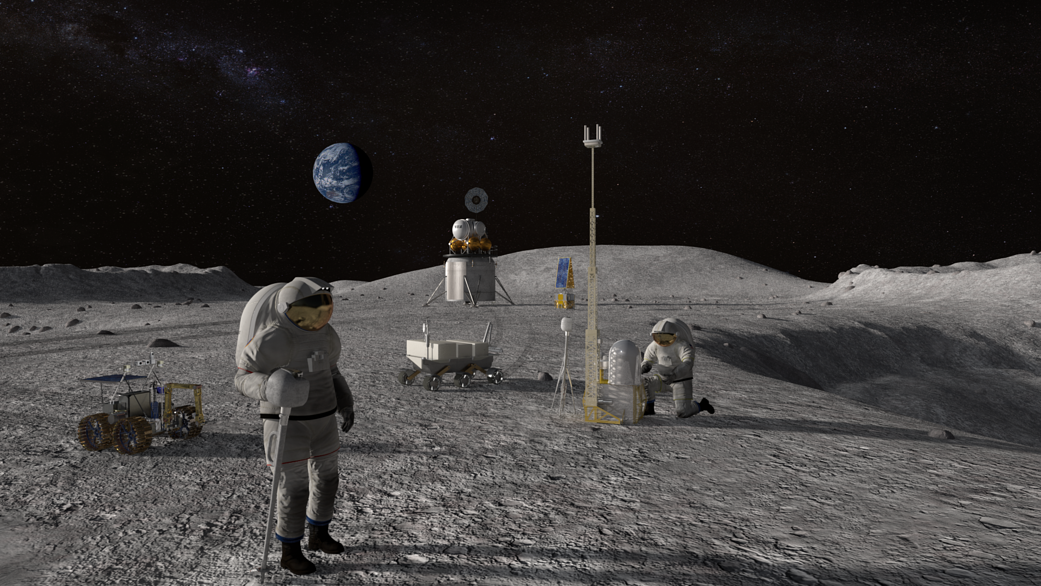Chinese media sources have suggested that the recent proposal by the United States to send a Japanese astronaut as the first non-American to land on the moon is motivated by a desire to outpace China in lunar exploration efforts.
The plan outlined during discussions between US President Joe Biden and Japanese Prime Minister Fumio Kishida on April 10 involves Japan working closely with NASA to place one of its astronauts on the lunar surface as part of NASA’s Artemis missions.
The proposed timeline aims for the first Japanese moon landing in 2028, followed by another in 2032. This ambitious agenda puts Japan in direct competition with China, which had announced its plans to send astronauts to the moon by 2030.
Local Chinese media alleged that the partnership between the United States and Japan in space endeavors, particularly the Artemis missions, served a symbolic purpose rather than a pragmatic one. The report added that it aimed to showcase to China the depth of cooperation between the two nations in space and artificial intelligence.
Western experts suggest that the US and Japan have been adhering to their lunar exploration timeline to prevent China from achieving a symbolic victory by landing its astronauts on the moon before them.
Concerns exist that such plans could provoke China to accelerate its lunar projects to secure a prestigious triumph in the space race over Japan.
With China increasingly competing with the US, Washington’s concerns regarding Beijing’s space ambitions have become more pronounced. Recent statements from US officials, including those from Bill Nelson, the head of NASA, have underscored America’s determination to reach the moon before China.
Nelson, speaking at a hearing of the House of Representatives Committee on Appropriations, highlighted the urgency for the US to lead in lunar exploration and expressed concerns over the potential militarization of outer space.
He cautioned against China’s secretive strides in space technology, noting their substantial financial investment and the need for vigilance in light of their expansive budget for further advances. Nelson particularly noted the risk of China claiming lunar resources for itself and urged the US not to lower its guard.
US, Chinese Lunar Strategies
The United States and China are fervently seeking international partners to bolster their lunar ambitions as the race to establish a long-term human presence on the moon gathers momentum.
China, having launched lunar missions since 2007, is aggressively pushing forward with its plans, including its ambitious goal to land two astronauts on the moon by 2030 aboard the spacecraft Mengzhou (“Vessel of Dreams”) and a lander called Lanyue (“Embracing the Moon”).
On its part, China is rallying allies for a rival joint moon base project known as the International Lunar Research Station, with potential partners that include Russia, Thailand, Pakistan, and South Africa.
Meanwhile, NASA’s Artemis Program, the successor to the historic Apollo missions, is poised to redefine the USA’s presence in outer space. With a more ambitious timeline than China’s lunar plans, NASA aims to achieve crewed lunar landings, establish a long-term base, and ultimately send the first astronauts to Mars.
The Artemis Accords, a set of guidelines for lunar exploration endorsed by 39 countries, including the US, the UK, Japan, Italy, India, Canada, Brazil, and most recently Slovenia, serve as the cornerstone of the US-led lunar governance.

NASA’s Artemis Program is progressing gradually, with Artemis II, the first crewed mission with four astronauts venturing around the moon, targeted for September 2025, followed by Artemis III, which plans to land astronauts near the lunar South Pole by September 2026. Additionally, Artemis IV, the inaugural mission to the Gateway lunar space station, is slated for 2028.
The competition between the US and China for lunar dominance is evident, yet it is just one facet of the complex dynamics unfolding in space exploration. With overlapping memberships in various lunar initiatives and no exclusionary practices instituted thus far, the space arena remains open to collaboration and partnership.
Beyond the race for milestones, however, lies the ultimate challenge: establishing a sustainable and resilient human presence in space.
The endeavor goes beyond planting flags or collecting rocks; it tests humanity’s ingenuity and adaptability to conquer the serious challenges in the extraterrestrial environment.
- Contact the author at ashishmichel(at)gmail.com
- Follow EurAsian Times on Google News